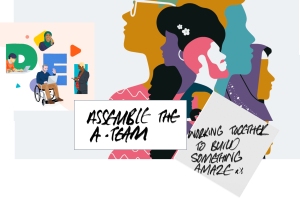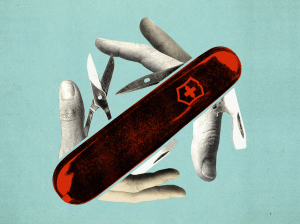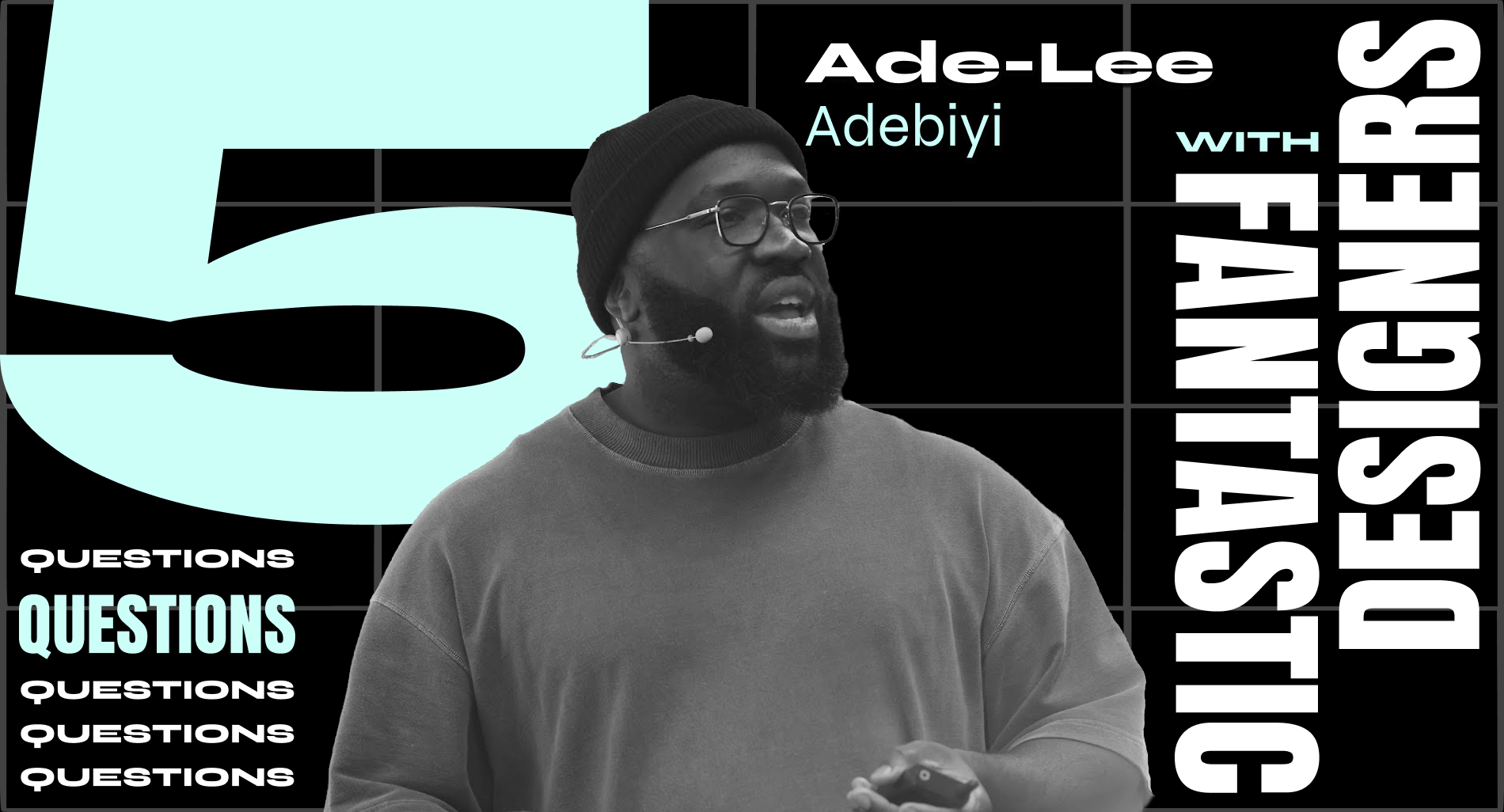Born in Japan, with Nigerian ancestry and schooling in London Ade-Lee Adebiyi is what we call a child of the world. He is currently Head of Design at SoPost, the digital sampling provider, and wholeheartedly believes in using data (such as S.M.A.R.T goal setting) to drive decisions when it comes to design and cross-functional creative team management. Ade-Lee is a volunteer, mentor, and an avid facilitator of fun and informative creative workshops. Empowering everyone to do their best work. But most of all Ade-Lee is an inspiration, a motivational leader in design.
“Level up, win together, and keep it real with empathy, not ego.” -Ade-Lee Adebiyi

1. What design trends do you think will take off this year and more in the future?
It’s always difficult to predict design trends, but I have a hunch on a few things that I believe will be much more prevalent in 2024.
- AI-Driven Design: It’s like the Swiss Army knife in the design world. It is cheap, super handy, and does the job. Designers are buddying up with AI, creating stuff that makes you go, “Wow, how’d they pull that off?” and there’s going to be much more of that in the coming months and years.
- Doing More With Less: Think of designers as magicians pulling rabbits out of hats, but with less fluff and more flair. Smaller teams? No sweat. Tight budgets? Challenge accepted. It’s pretty awesome to see what people are doing and how creativity is being pushed forward.
- Ugly Illustrations and Big Bold Text: Ah, the 90s – the decade that keeps giving. We’re talking illustrations that are so ‘ugly’. They’re cute and a text so bold it could walk itself down the runway. 2024 is all about being loud, proud, and a tad nostalgic.
- Subscription-Based Agency Work: One-person agencies are on the rise and I’m here for it! It’s becoming easier to find someone who does something really well, pay them a fixed fee, and they will do all the work on time and complete it to a high standard. Picture this: Netflix, but for design. The tech world’s doing the cha-cha, and design is grooving along with subscription models.

2. When it comes to making design and the design industry more diverse, equal, and inclusive, what changes are needed or would you like to see?
Talking about diversity in design is like adding spices to a meal – it should have been there from the start! Here’s my take on what we need to stir into the mix:
- Educational Access and Outreach: Design leaders must be better educated and more self-aware of the ongoing problems when advocating diversity and inclusion. Connecting with diverse groups and networks is a fantastic starting point.
- Inclusive Workplace Cultures: Workplaces should be like a great party – everyone’s invited, everyone’s comfortable, and everyone gets to dance. We need cultures that don’t just open the door but welcome people in with a warm embrace. This means policies and environments that support and celebrate differences.
- Promotion of Diverse Talent: This is about turning the spotlight on talent from all walks of life. Agencies and design teams should actively seek and promote diverse voices, not just because it’s right but because it enriches our work.
- Client and Project Diversity: Imagine a portfolio as diverse as a bustling city street – full of different stories, backgrounds, and perspectives. This diversity helps us create designs that resonate with a broader audience because, let’s face it, our audience is as diverse as a box of assorted chocolates.
We need to weave diversity into the very fabric of the design industry. It’s about making it as natural as breathing, as present as creativity, and as essential as a good cup of coffee. Let’s mix it up!

3. What are 2 things you were not taught in school (if you were formally trained in design) that you wished you had been taught?
I studied Design for Digital Media from 2007-2010, and the course was ahead of its time; however, it didn’t fully equip me with everything I needed to get started in the industry. Here are the things I wish they’d covered:
- The Practical Importance of Soft Skills: It’s often about how you communicate, collaborate, and empathise. I wish there had been more emphasis on soft skills – like giving and receiving feedback without taking it personally or navigating client meetings effectively.
- Being Business-Minded and Data-Driven: Design isn’t just art; it’s also a business. I wish there had been more focus on understanding the business side. Like how to make designs that look good and meet business objectives. Or how to use data to inform design decisions – because sometimes numbers speak louder than pictures.
While my degree was great for the creative side, a little more on communication, foundational principles, and business would have been the cherry on top.
4. What are the biggest challenges you’ve had to face as a designer? Did you overcome them? How?
Here are some of the hurdles I’ve had to jump over:
- Skilling Up and Going Beyond the Plateau: Every designer hits a point where they feel like they’ve learned all they can. For me, overcoming this plateau was about constantly skilling up. I learned new software, experimented with different styles, and even took courses that felt way out of my league.
- Learning about the Peter Principle: I had to learn to recognize where my strengths lie and focus on them rather than trying to be a jack-of-all-trades. Knowing when to step back and play to your strengths was a challenge for me.
- Dealing with My Ego: Let’s be real; designers can have big egos. I had to learn to take criticism constructively and not let my ego get in the way. I’m also learning how to better balance my confidence with humility – for example, being proud of my work and knowing there’s always room for improvement.
- Being an Actual Advocate: I’ve also spent a lot of time honing my pitch and learning to speak the language of execs, to demonstrate how design isn’t just about making things look pretty – it’s about solving problems and adding real value.
In essence, overcoming these challenges was a mix of personal growth, continuous learning, and a bit of humility.

5. Why do you think Design Matters?
Design is everything and everywhere. We often try to trivialize it, as a nice-to-have, however, it influences everything we do. From the brands we wear, the food we eat, and the organizations we support, design plays a part in our decision-making. Good design is invisible and unnoticed and because of that we often forget it matters. From accessibility to inclusion, design plays a pivotal role in everything we do.

* * *
Do you want to hear more from Ade-Lee? He gave a talk at the digital design conference Design Matters 23. Watch his talk here. Connect with Ade-Lee on X @adelee_design or via his website or by mail: design@ade-lee.com
Don’t miss the chance to check out Ade-Lee’s book ‘The Design Thinking Manga’










